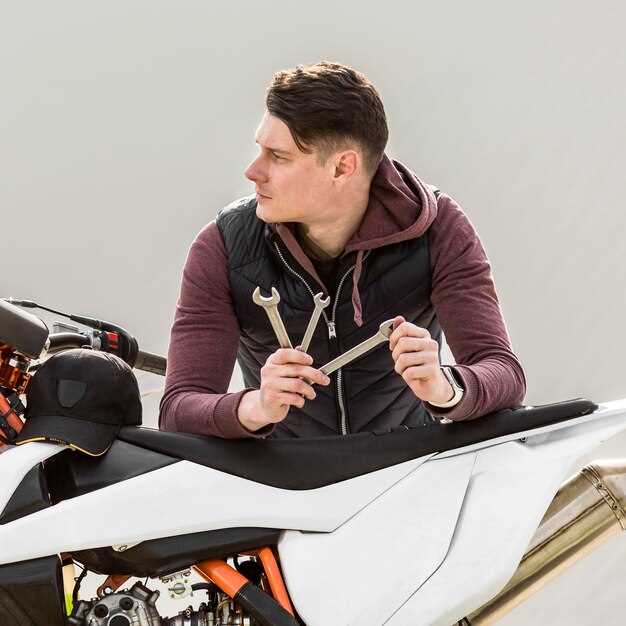
When it comes to motorcycle racing, every ounce matters. The weight of your bike can significantly influence its handling, acceleration, and overall performance on the track. A lighter motorcycle not only responds better to rider inputs but also allows for faster cornering and enhanced stability, making weight reduction a crucial aspect of racing strategy.
In this article, we will explore effective tips and techniques to reduce the weight of your motorcycle without compromising its structural integrity or safety. From selecting lightweight components to optimizing your riding gear, these insights will help you achieve a more agile and responsive machine.
By focusing on weight reduction, riders can gain a competitive edge in races, improving their chances of success. Understanding the relationship between weight and handling is essential for anyone looking to elevate their riding experience, whether on the track or the road.
Choosing Lightweight Materials for Custom Parts
When it comes to enhancing motorcycle performance, particularly in racing, selecting the right materials for custom parts is crucial. Lightweight materials play a significant role in reducing overall weight, which directly improves handling and agility on the track.
Carbon Fiber is one of the most popular choices among racers due to its exceptional strength-to-weight ratio. Components like fairings, fenders, and brackets made from carbon fiber can significantly cut down weight while maintaining structural integrity. The result is a motorcycle that can turn more quickly and respond better to rider inputs.
Aluminum is another excellent option for custom parts. Its lightweight nature combined with good durability makes it perfect for components such as swingarms, wheels, and engine casings. Aluminum parts can be machined and fabricated easily, allowing for customized designs that enhance both performance and aesthetics.
Titanium is also favored for its strength and low weight, particularly for exhaust systems and fasteners. Although more expensive, titanium can withstand higher temperatures and harsh conditions, making it ideal for competitive racing environments where performance and reliability are paramount.
In addition to these materials, advanced composites are increasingly being used in custom motorcycle parts. These materials can incorporate a variety of fibers and resins to create lightweight structures that outperform traditional metals. This innovation offers endless possibilities for custom design while maximizing weight savings.
Ultimately, the selection of lightweight materials for custom parts is a game-changer in motorcycle racing. By focusing on high-performance materials that prioritize weight reduction, riders can experience improved handling, faster lap times, and a competitive edge on the track.
Optimizing Your Motorcycle’s Balance and Center of Gravity

Achieving the optimal balance and center of gravity on your motorcycle is crucial for enhancing handling characteristics and overall performance. A lower center of gravity leads to improved stability, allowing for better control during cornering and maneuvering. One effective method for weight reduction is to assess the placement of components on the bike. Lightweight aftermarket parts, such as brakes, wheels, and exhaust systems, can significantly lower weight while maintaining strength and functionality.
Another strategy involves redistributing existing weight. By carefully placing heavier components, like the battery or fuel tank, you can achieve a more favorable weight distribution. Positioning these elements downward and centrally affects the bike’s balance, resulting in improved handling dynamics. Additionally, removing unnecessary accessories and components not only reduces weight but also aids in decluttering the motorcycle, allowing it to perform more efficiently.
Regular maintenance and inspections can also play a role in maintaining optimal balance. Ensuring proper tire pressure and adjusting suspension settings according to your riding style and conditions can greatly influence how your motorcycle handles. Furthermore, consider rider position and gear weight; optimal rider posture can enhance balance and stability, directly impacting cornering and overall agility.
Ultimately, the goal of optimizing balance and center of gravity through weight reduction is to create a responsive and nimble ride. Apply these techniques consciously, and you will notice a significant improvement in how your motorcycle handles various riding scenarios.
Streamlining Accessories and Gear for Weight Savings

To enhance motorcycle handling, reducing unnecessary weight from accessories and gear is crucial. Racing enthusiasts understand that every ounce counts; thus, selecting lightweight components can significantly improve performance. Start by evaluating your existing accessories. Opt for minimalist designs and materials such as carbon fiber or aluminum, which offer strength without the heft of traditional options.
When it comes to riding gear, consider investing in high-quality, lightweight motorcycle suits that still provide adequate protection. Look for items that blend comfort with functionality, such as ventilated helmets and gloves made from lightweight materials. Avoid bulky accessories like heavy backpacks; instead, use streamlined saddlebags or tank bags that secure essentials without adding undue weight.
Additionally, consider the impact of aftermarket parts, such as exhaust systems, brake components, and wheels. Upgrading to lightweight variants not only improves handling but can also lead to faster acceleration and better cornering. Racing-specific gear is designed with performance in mind, so prioritize these choices while maintaining safety and durability.
Ultimately, a strategic approach to your motorcycle’s accessories and gear can lead to significant weight savings, resulting in enhanced agility and handling on the track or road. Focus on quality over quantity, and always seek out innovative options that align with your racing goals.
